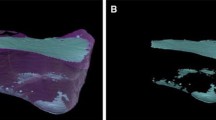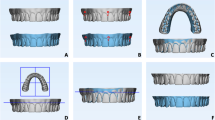Abstract
In dentistry, all ceramic restorations were widely used because of perfect esthetic, especially the zirconia ceramic. Now in digital dentistry, zirconia dental restorations are mostly made from digital manufacturing system such as the computer-aided design and computer-aided manufacturing (CAD/CAM) or three-dimension printing (3DP). After producing, the sintering process is indispensable due to the increase in the mechanical properties. Notably, the side effect of shrinkage of the sintering process is difficult to predict or control and cannot be studied deeply. Reflecting the accurate of zirconia restoration is lower, especially the most important factor of restoration fitness. So the poor fitness of restoration easily leads to secondary caries or micro leakage that the tooth will decay again and the remaining teeth will need to be removed completely. In this paper, the 3DP is the target manufacturing process to avoid the high cost of CAD/CAM processing; the 3DP product needs to be of high precision after the sintering process. However, the shrinkage of the 3DP product is difficult to predict and cannot be studied deeply. Therefore, different shrinkage rates of experimental pieces following the manufacturer’s instructions of the sintering process are first predicted in CAE analysis, experimental design, and regression analysis. The results are then applied in the manufacture of incisor restoration to verify the shrinkage. This can make the restoration fit in the patient’s mouth properly and reduce the medical operation time. It helps the 3DP to successfully apply the dentures.
Similar content being viewed by others
References
Mitteramskogler G, Gmeiner R, Felzmann R, Gruber S, Hofstetter C, Stampf J, Ebert J, Wachter W, Laubersheimer J (2014) Light curing strategies for lithography-based additive manufacturing of customized ceramics. Additive Manufacturing 1-4:110–118
Yau HT, Yang TJ, Chen YC (2014) Tooth model reconstruction based upon data fusion for orthodontic treatment simulation. Comput Biol Med 48:8–16
Martorelli M, Gerbino S, Giudice M, Ausiello P (2013) A comparison between customized clear and removable orthodontic appliances manufactured using RP and CNC techniques. Dent Mater 29:e1–e10
Cross D, El-Angbawi A, McLaughlin P, Keightley A, Brocklebank L, Whitters J, McKerlie R, Cross L, Welbury R (2013) Developments in autotransplantation of teeth. Surgeon 11:49–55
Flügge TV, Nelson K, Schmelzeisen R, Metzger MC (2013) Three-dimensional plotting and printing of an implant drilling guide: simplifying guided implant surgery. J Oral Maxillofac Surg 71:1340–1346
Cohen A, Laviv A, Berman P, Nashef R, Jawad AT (2009) Mandibular reconstruction using stereolithographic 3-dimensional printing modeling technology. Oral Surgery, Oral Medicine, Oral Pathology, Oral Radiology, and Endodontology 108:661–666
Larsen M, Mishra R, Miller M, Dean D (2015) 3D Bioprinting and nanotechnology in tissue engineering and regenerative medicine, chapter 9—craniofacial and dental tissue. Academic Press, USA, pp. 191–213
Hung BP, Huri PY, Temple JP, Dorafshar A, Grayson WL (2015) 3D Bioprinting and nanotechnology in tissue engineering and regenerative medicine, chapter 10-craniofacial bone. Academic Press, USA, pp. 215–230
Chang KU (2013) Product manufacturing and cost estimating using CAD/CAE, chapter 5–rapid prototyping. Academic Press, USA, pp. 191–235
Chen J, Zhang Z, Chen X, Zhang C, Zhang G, Xu Z (2014) Design and manufacture of customized dental implants by using reverse engineering and selective laser melting technology. J Prosthet Dent 112:1088–1095
Weller C, Kleer R, Piller FT (2015) Economic implications of 3D printing: market structure models in light of additive manufacturing revisited. Int J Prod Econ 164:43–56
Jardini AL, Larosa MA, Filho RM, Zavaglia CAC, Bernardes LF, Lambert CS, Calderoni DR, Kharmandayan P (2014) Cranial reconstruction: 3D biomodel and custom-built implant created using additive manufacturing. J Cranio-Maxillofac Surg 42:1877–1884
Park HS, Chintal S (2015) Development of high speed and high accuracy 3D dental intra oral scanner. Procedia Engineering 100:1174–1181
Chang SL, Lo CH, Jiang CP, Lee SY, Lin YM (2015) “Shrinkage predication of human tooth manufactured through 3D printing,” International Journal of Life Sciences Biotechnology and Pharma Research, Vol. 4, No. 1
Chang SL, Lo CH, Jiang CP (2015) The manufacture of molar and dental bridge through 3D printing. Applied Mechanics and Materials 789-790:1217–1222
Chang SL, Lo CH, Jiang CP, Juan DJ (2015) The fit consideration of the denture manufactured by 3D printing and sintering. International Journal of Pharma Medicine and Biological Sciences 4(3):184–187
Taguchi G, Chowdhury S, Wu Y (1987) Orthogonal arrays and linear graphs: tools for quality engineering, ASI
Montgomery DC, Peck EA, Vining GG (2012) Introduction to linear regression analysis, 5th edn. Wiley, Hoboken
Pak HS, Han JS, Lee JB, Kim SH, Yang JH (2010) Influence of porcelain veneering on the marginal fit of Digident and Lava CAD/CAM zirconia ceramic crowns. The journal of advanced prosthodontics 2(2):33–38
Baig MR, Tan KB, Nicholls JI (2010) Evaluation of the marginal fit of a zirconia ceramic computer-aided machined (CAM) crown system. J Prosthet Dent 104(4):216–227
Hamza TA, Ezzat HA, EI-Hossary MMK, Katamish HAEM, Shokry TE, Rosenstiel SF (2013) Accuracy of ceramic restorations made with two CAD/CAM systems. J Prosthet Dent 109(2):83–87
Kesgvad A, Hooshmand T, Asefzadeh F, Khalilinejad F, Alihemmati M, Van Noort R (2011) Marginal gap, internal fit, and fracture load of leucite-reinforced ceramic inlays fabricated by CEREC inLab and hot-pressed techniques. J Prosthodont 20(7):535–540
Author information
Authors and Affiliations
Corresponding author
Rights and permissions
About this article
Cite this article
Hsu, H.J., Lee, S.Y., Chang, S.L. et al. Shrinkage prediction using finite element analysis and experimental validation using three-dimension slurry printing system. Int J Adv Manuf Technol 91, 1289–1296 (2017). https://doi.org/10.1007/s00170-016-9842-3
Received:
Accepted:
Published:
Issue Date:
DOI: https://doi.org/10.1007/s00170-016-9842-3




